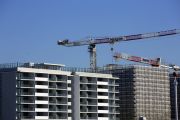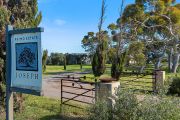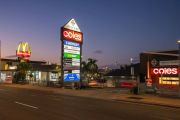
Goodman, Scentre among REITs set to bounce higher in 2025
Australia’s $190 billion real estate investment trust sector is set to surge higher over the next 12 months as rising rents and falling interest rates drive up earnings, leading global investment managers have forecast.
“We’re expecting 4-5 per cent earnings growth this year and 6-7 per cent next year [for global REITs],” said Steven Rodriguez, vice president and portfolio manager at $US200 ($320 billion) investment giant American Century Investments, which has stakes in Australian REITs Goodman Group and Scentre Group and previously had a stake in Charter Hall Group.

When you tack on a dividend yield of about 3 per cent, that equates to a 10 per cent total return, he said. “We see a very steady real estate outlook for the next 12 months,” Mr Rodriguez said.
While recessionary fears – rather than underlying performance fundamentals – have held back a broader recovery in global real estate stocks, in Australia the benchmark S&P/ASX 200 A-REIT Index delivered an 18.5 per cent total return in 2024 outperforming the ASX 200 (which managed an 11.2 per cent total return) and most other global REIT indexes.
However, Australia’s A-REIT sector is heavily weighted to $70 billion logistics giant Goodman Group, whose shares ended the calendar year up 42 per cent as it successfully shifted focus from sheds to hyperscale data centres.
Busy real estate fund manager Charter Hall (shares up 21.5 per cent) and Westfield mall landlord Scentre Group (up 14.3 per cent) were the other stronger performers in 2024 while Dexus, GPT, Mirvac, Cromwell, BWP Trust, Vicinity Centres and Charter Hall Retail REIT all ended up in the red.
Mr Rodriguez said driving earnings growth in 2025 and beyond for many REITs was a material shortfall of development completions after “higher rates choked off new supply” while demand remained steady.

“Steady demand versus falling supply means an improvement in pricing power for landlords. This is the global theme we are sitting on, on the other side of this [development slowdown],” Mr Rodriguez said.
This shift in the power balance between landlord and tenant will help REITs lease up buildings at higher rates, fuelling earnings growth in 2025 and beyond, while supply slowly catches up with demand, he said.
“We expect 2025 to be the bottoming-out of construction activity, but given it takes one to three years for a building to be completed, new development completions won’t start to re-accelerate for another two to three years,” Mr Rodriguez said.
Lower interest rates could deliver further upside to earnings, but Mr Rodriguez said steady real estate performance did not depend on rate cuts.
“Just knowing that we are done with the rate hike cycle and that a re-acceleration of inflation is unlikely to occur, gives confidence,” he said. “Capital markets have come to that conclusion.”
Matthew Sgrizzi, a portfolio manager at global investment manager LaSalle Investment Management Securities was even more bullish about the outlook for REITs.
The sector, he said, could be on the cusp of a new “golden era” in 2025.
“Many of the factors supporting the REIT market’s upbeat prospects are also positives for real estate as a whole,” he said.
“For example, an easing in financial conditions has historically been a driver of strong forward REIT returns, as well as those for private equity real estate.”
Mr Sgrizzi’s base case forecast is for REITs to deliver total annual returns of between 8 and 9 per cent over the next three years – in line with 25-year historic averages.
“If financial conditions were to ease further, these return expectations could increase to the mid- to high teens-range per annum, which aligns with previous ‘golden era’ REIT performance,” he said.
In Australia, American Century is most bullish about Goodman Group, the industrial property giant now pivoting towards data centres and Scentre group, owner and operator of Westfield malls.
Mr Rodriguez said the investment firm held a “high conviction” about Goodman Group because of its decision to transition a lot of land in its portfolio to data centre development “where returns are materially better than industrial, a sector where rental growth is moderating”. (American Century is also bullish about ASX-listed data centre owner and operator NextDC, which is not a REIT).
American Century’s optimism about mall landlord Scentre Group is being driven by improving retail sales across many developed markets, which Mr Rodriguez said was driving demand for more store openings.
Combined with very few malls built in Australia and globally over the past decade, this created a favourable demand/supply scenario that improved the pricing power for many retail landlords including Scentre, he said.
American Century is seeing a global recovery in the office market, but Mr Rodriguez said the sector was still flatlining in the US, and a return to the office by many workers remained slow.
Guy Barnard, a co-head of global property equities at Janus Henderson Investors, said “more lights were turning green for listed real estate in 2025”.
Underlying operational fundamentals of many REIT businesses remained robust, with occupancy high and rents rising, Mr Barnard said.
“These factors can enable further cash flow and dividend growth in the year ahead,” he said.
He added that commercial real estate values had now “largely been reset”. “Higher transaction volumes should result in a firming and eventual increase of asset values,” Mr Barnard said.











